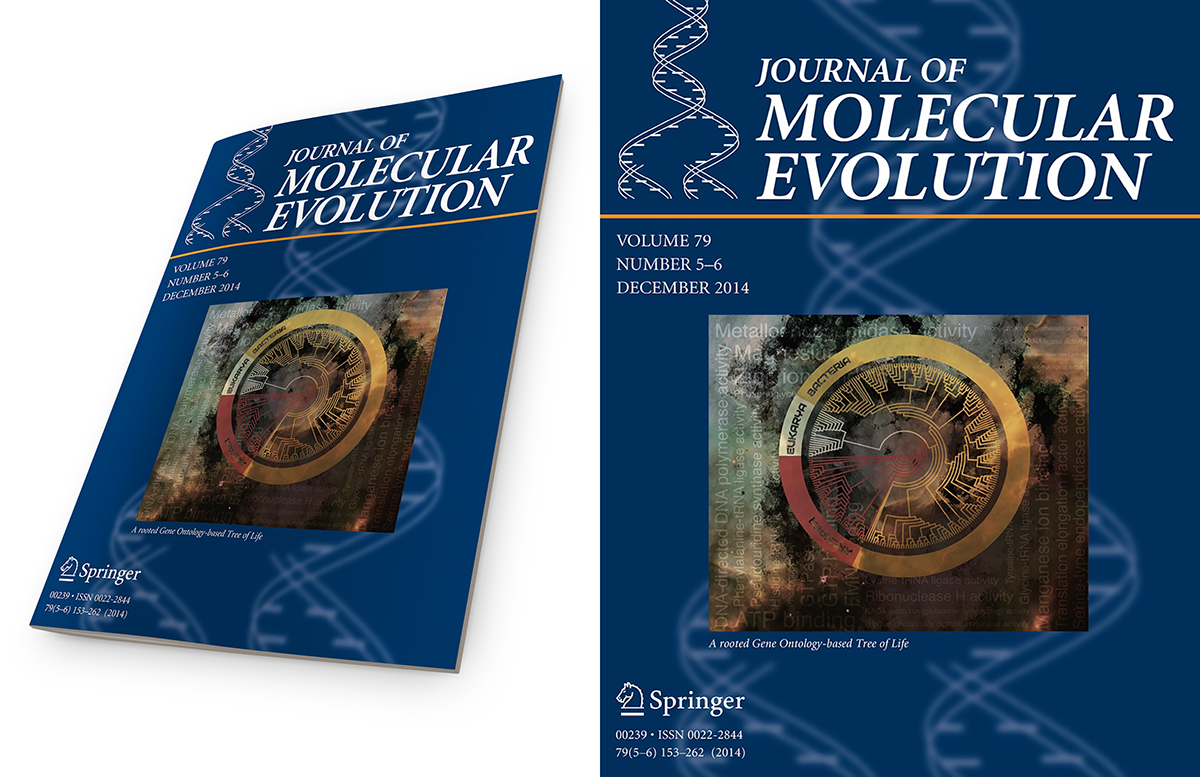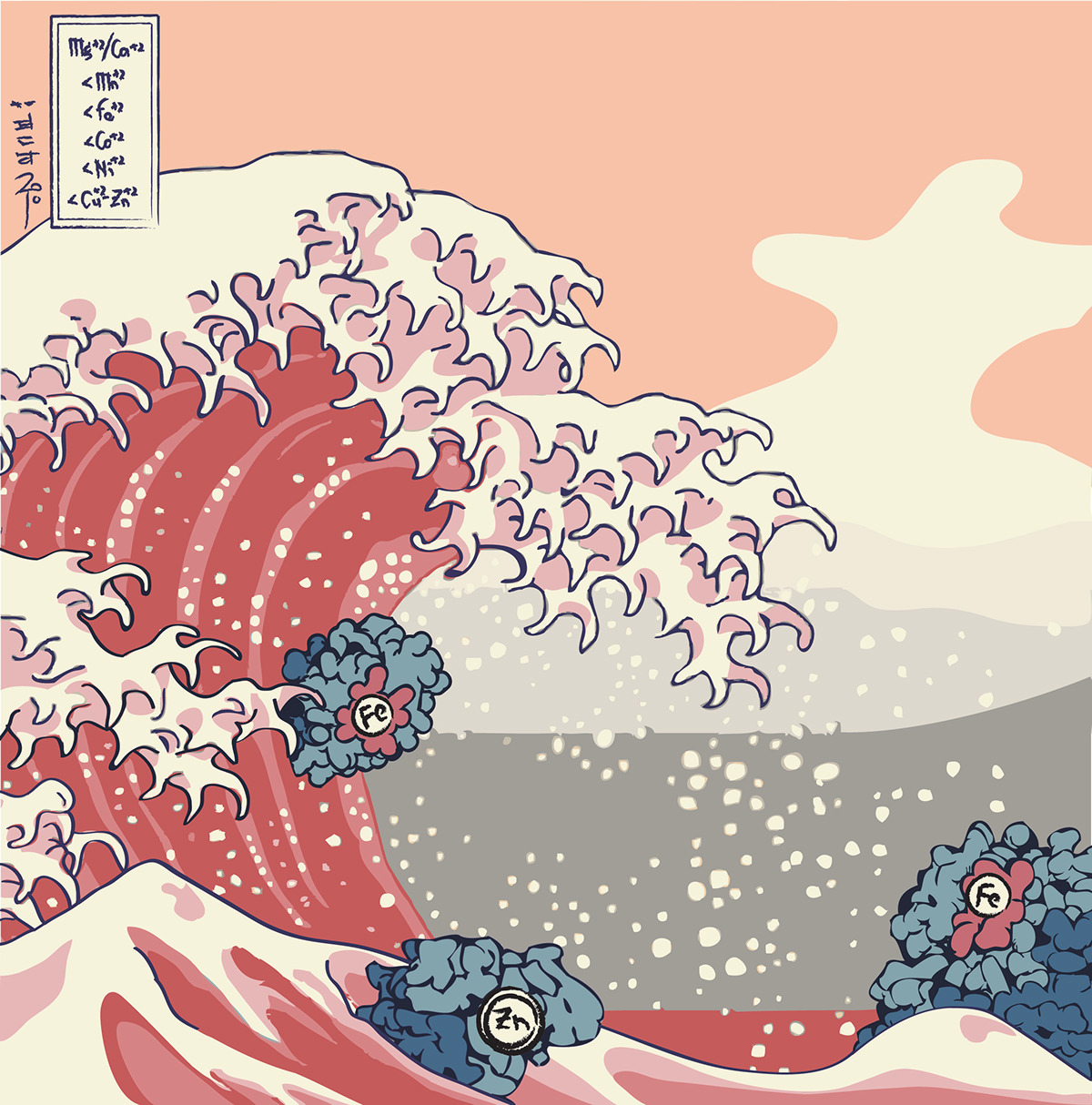
This is a depiction of the universal phylogenomic tree grouping organisms into the three superkingdoms of life - Archaea, Bacteria, and Eukarya. The fresco depicts the allegory of the monstrous three-headed Cerberus that guarded the gates to the Underworld and its capture by Heracles in the last of his twelve labors, conveying the discovery of the origins of a three-headed world that are reported in this issue of Genome Research.

In this issue of Structure, the genome-based phylogenetic trees that define timelines of domain discovery are reconstructed, describing an explosive combinatorial game that is vastly responsible for the complexity of the protein world. This “big bang” of protein discovery occurred during the early stages of diversified life, and its sudden appearance in the world is here illustrated as a cosmic event that features in the foreground several domain combinations of the membrane-associated guanylate kinase (MAGUK) family.

The charging of amino acids by their cognate transfer RNA (tRNAs) is central to modern translation, and links evolution of the genetic code with chronologies that describe the use of amino acids in an emergent protein world. Although it is commonly accepted that only few of the canonical amino acids were initially coded and charged by tRNA, the composition of this early group of amino acids has been controversial. Aspects of the evolutionary significance of the long variable arm in transfer RNA are represented in this cover image.

This special issue of the Journal of Molecular Evolution is devoted entirely to promoting research into the origin of life, which the journal has prided itself on doing since its first issue in 1971. The emergence of new data in the field through the utilization of computer science and informatics is here represented through the depiction of 5sRNA at a computer terminal running the codes by which its origins can be analyzed.

Evolutionary Genomics and Systems Biology is the first full-length book to blend established and emerging concepts in bioinformatics, evolution, genomics, and structural biology, with the integrative views of network and systems biology. It is an ideal book for students and professionals in genomics, bioinformatics, evolution, structural biology, complexity, origins of life, systematic biology, and organismal diversity, as well as those individuals interested in aspects of biological sciences as they interface with chemistry, physics, and computer science and engineering.

The interplay of protein stability and function in sequence space, represented by a grid diagram depicting multidimensional sequence space (flattened into a two-dimensional view) of protein sequences that change into others by single-point mutations (the third dimension represents thermodynamic stability). All proteins in the grid fold into a same three-dimensional structure, a four-helix bundle structure typical of cytochrome cb562. In this illustration, cytochrome proteins drift in evolution along the grid (colored regions) while folding into the same 3D structure and searching for increases in protein stability. This results in sections of the proteins that are evolutionarily conserved due to constraints imposed by the interplay of stability and function (grey regions close to metal-binding sites in the bundles).

This illustration depicts the evolution of ribosome structure. Over a period of billions of years, this protein-synthetizing molecule has added and recruited protein and RNA structures and crucial molecular interactions through a process of ribonucleoprotein accretion. This gradual process led to the formation of a complex ribosomal multi-molecular ensemble. As the illustrated ribosomal structure travels through a fictionalized time warp across its evolution, we note that more ancient protein and RNA structures are located in the core of the ensemble and are colored in red, while newer and more recently added structures are peripheric and colored in blue. Thus, the coordinated evolution of proteins and RNA reveals the ribosome is a relic of an ancient ribonucleoprotein world.
Selected as part of the runner-up round of Science's "2010 Science & Engineering Visualization Challenge".

The evolutionary appearance of catalases oxygenated the planet as they degraded photochemically produced hydrogen peroxides. It is quite likely that these peroxides were massively released in the meltwaters of Archean glaciations, impacting the make up of life, the geochemistry of ancient oceans, and our Earth's atmosphere. The illustration, inspired by the “The Great Wave off Kanagawa” (woodblock print, Katsushita Hokusai, c. 1829-1832), portrays the puzzle of the Irving-William series, its effects on economy of metal use, and the rise of crucial pelagic metalloenzymes that triggered planet oxygenation and aerobic metabolic networks.

A modification of the “Confusion of Tongues” engraving by Gustave Doré (1832–1883), portraying the event of diversification that halted the construction of the Tower of Babel. In linguistics, the biblical story inspired "tree-thinking", however in this article this metaphor is utilized as a depiction of the fall of the urancestor of cellular life and the replacement of “scala naturae” by the branching processes of complexity.

During late 2013, the Journal of Molecular Evolution was receiving an increased number of submissions focused on the early evolution of life and molecular evolutionary events. The November/December 2014 issue is the result of the current efforts in this field of research.










